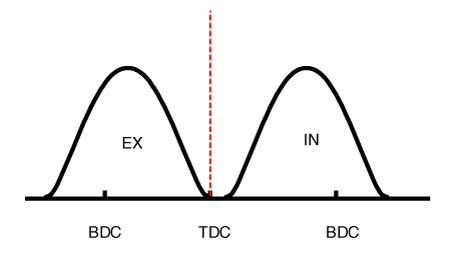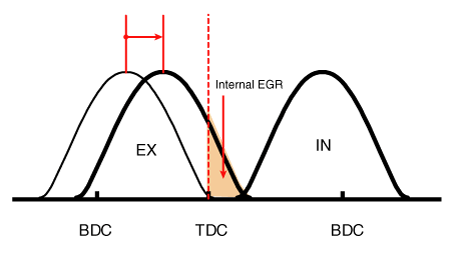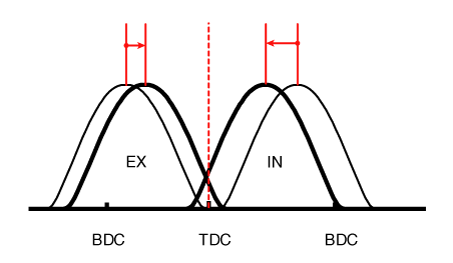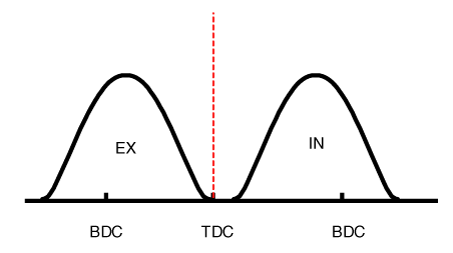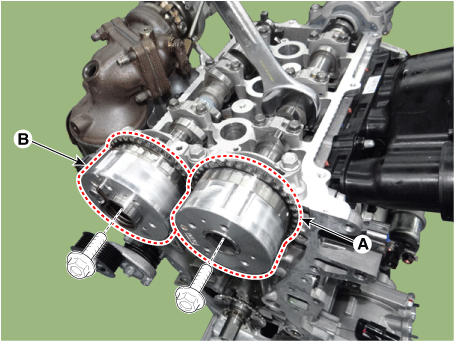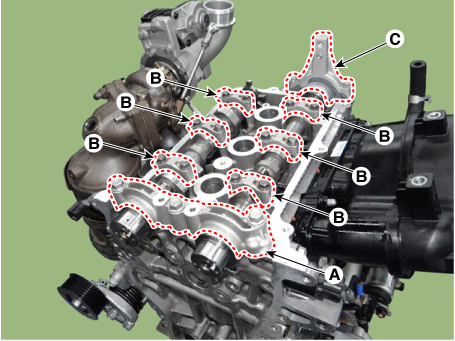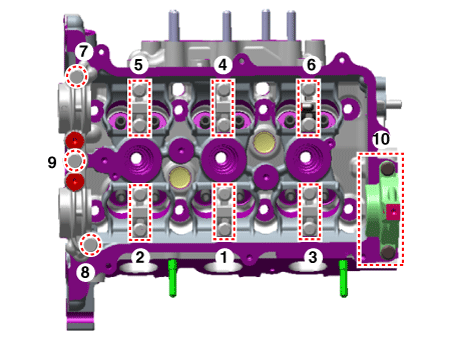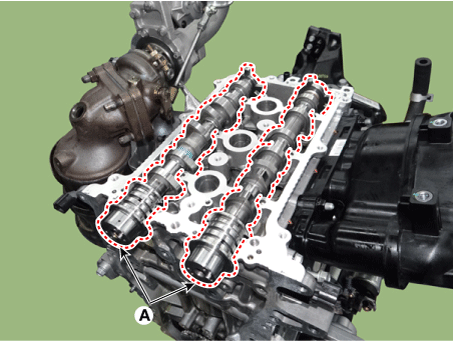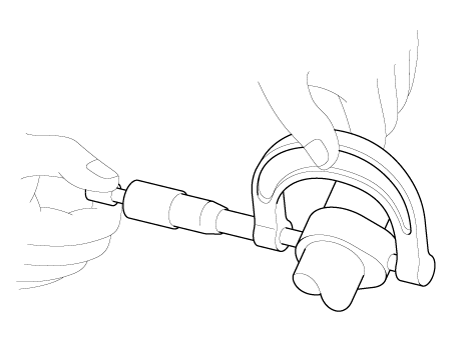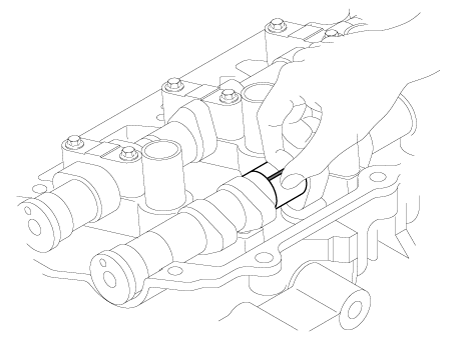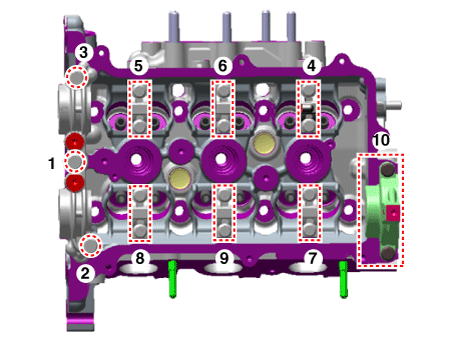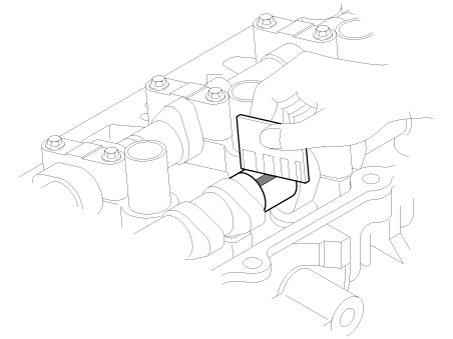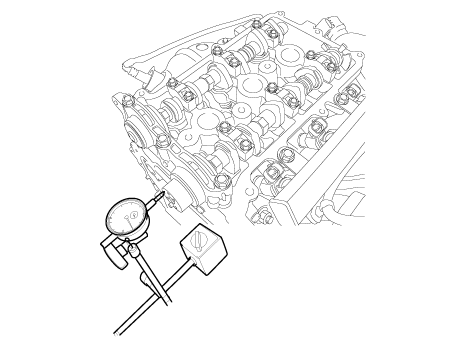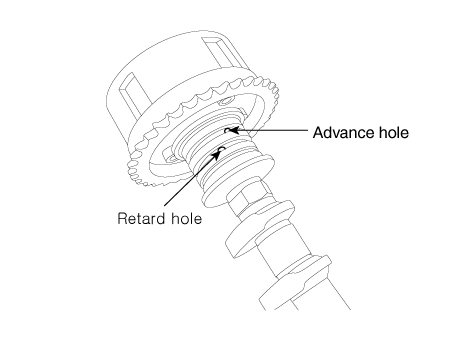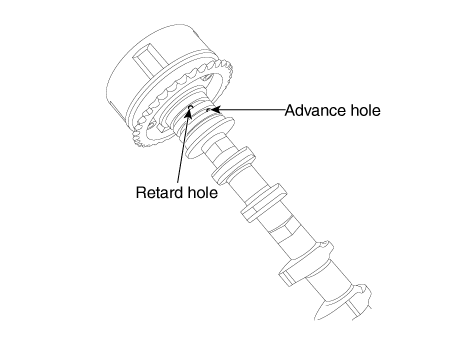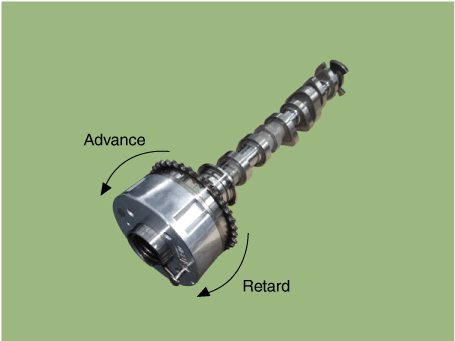Kia Picanto: Cylinder Head Assembly / CVVT & Camshaft
Kia Picanto JA 2017-2025 Service & Repair Manual / Engine Mechanical System / Cylinder Head Assembly / CVVT & Camshaft
Description and operation
| Description |
Continuous
Variable Valve Timing (CVVT) system advances or retards the valve
timing of the intake and exhaust valve in accordance with the ECM
control signal which is calculated by the engine speed and load.
By
controlling CVVT, the valve overlap or underlap occurs, which makes
better fuel economy, reduces exhaust gases (Nox, HC) and improves engine
performance through reduction of pumping loss, internal EGR effect,
improvement of combustion stability and volumetric efficiency, and
increase of expansion work.
This system consists of
| – | the
CVVT Oil Control Valve (OCV) which supplies the engine oil to the cam
phaser or runs out the engine oil from the cam phaser in accordance with
the ECM PWM (Pulse With Modulation) control signal, |
| – | the CVVT Oil Temperature Sensor (OTS) which measures the engine oil temperature, |
| – | and the Cam Phaser which varies the cam phase by using the hydraulic force of the engine oil. |
The
engine oil released from the CVVT oil control valve varies the cam
phase in the forward direction (Intake Advance/Exhaust Retard) or
opposite direction (Intake Retard/Exhaust Advance) of the engine
rotation by rotating the rotor connected with the camshaft inside the
cam phaser.
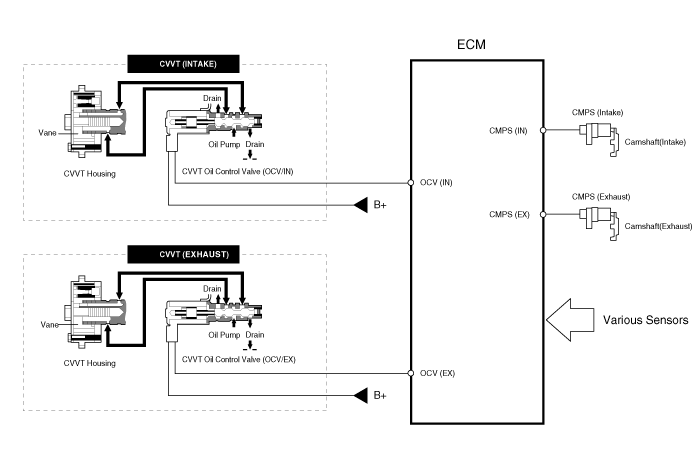
| Operation Principle |
The
CVVT has the mechanism rotating the rotor vane by hydraulic force
generated by the engine oil supplied to the advance or retard chamber in
accordance with the CVVT oil control valve control.
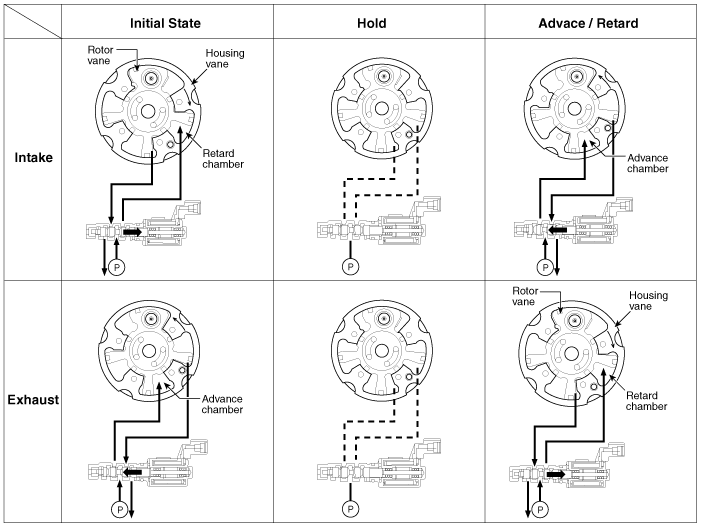
| [CVVT System Mode] |
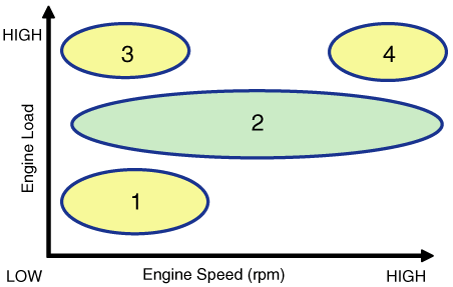
| (1) Low Speed / Low Load | (2) Part Load |
|
|
| (3) Low Speed / High Load | (4) High Speed / High Load |
|
|
|
Driving
Condition |
Exhaust Valve
|
Intake Valve
| ||
|
Valve
Timing |
Effect
|
Valve
Timing |
Effect
| |
| (1) Low Speed /Low Load | Completely Advance | * Valve Under-lap * Improvement of combustion stability | Completely Retard | * Valve Under-lap * Improvement of combustion stability |
| (2) Part Load | Retard | * Increase of expansion work * Reduction of pumping loss * Reduction of HC | Retard | * Reduction of pumping loss |
| (3) Low Speed /High Load | Retard | * Increase of expansion work | Advance | * Prevention of intake back flow (Improvement of volumetric efficiency) |
| (4) High Speed /High Load | Advance | * Reduction of pumping loss | Retard | * Improvement of volumetric efficiency |
Repair procedures
| Removal |
| 1. | Remove the cylinder head cover.
(Refer to Cylinder Head Assembly - “Cylinder Head Cover”)
|
| 2. | Remove the vacuum pump.
(Refer to Cylinder Head Assembly - "Vacuum Pump")
|
| 3. | Remove the timing chain.
(Refer to Timing System - “Timing Chain”)
|
| 4. | Remove the intake CVVT assembly (A) and exhaust CVVT assembly (B).
|
| 5. | Remove
the camshaft front bearing cap (A), camshaft middle bearing cap (B),
and camshaft rear bearing cap (C) in the sequence shown.
|
| 6. | Remove the camshafts (A).
|
| Inspection |
Camshaft
| 1. | Inspect cam lobes. Using a micrometer, measure the cam lobe height.
If the cam lobe height is less than standard, replace the camshaft. |
| 2. | Inspect the camshaft journal clearance.
|
| 3. | Inspect the camshaft end play.
|
CVVT (Continuous Variable Valve Timing) Assembly
| 1. | Inspect the CVVT assembly.
|
| Installation |
| 1. | Install the camshafts (A).
|
| 2. | Install
the camshaft front bearing cap (A), camshaft middle bearing cap (B),
and camshaft rear bearing cap (C) in the sequence shown.
|
| 3. | Install the intake CVVT assembly (A) and exhaust CVVT assembly (B).
|
| 4. | Install the remaining parts in the reverse order of removal. |
 Vacuum Pump
Vacuum Pump
Repair procedures
Removal and Installation
1.Disconnect the battery negative terminal.
2.Disconnect the wiring connectors and harness clamps and remove the connector brackets around the vacuu ...
 Cylinder Head
Cylinder Head
Repair procedures
Removal
•
Use fender covers to avoid damaging painted surfaces. •
To avoid damaging the ...
Other information:
Kia Picanto JA 2017-2025 Service & Repair Manual: Audio Remote Control
Components and components location Components 1. Left Remote Control Switch (Audio + Hands free + Voice) 2. Right Remote Control Switch (Cruise+Trip Computer) Schematic diagrams Circuit Diagram [Audio] [Audio + Bluetooth] [Audio + Bluetooth + Voice] ...
Kia Picanto JA 2017-2025 Service & Repair Manual: Sunroof Deflector
Repair procedures Replacement 1. Open the glass fully. 2. Remove the mounting pins (B), and then remove the deflector (A). 3. Install in the reverse order of removal. ...
Copyright © www.kpicanto.com 2017-2025


